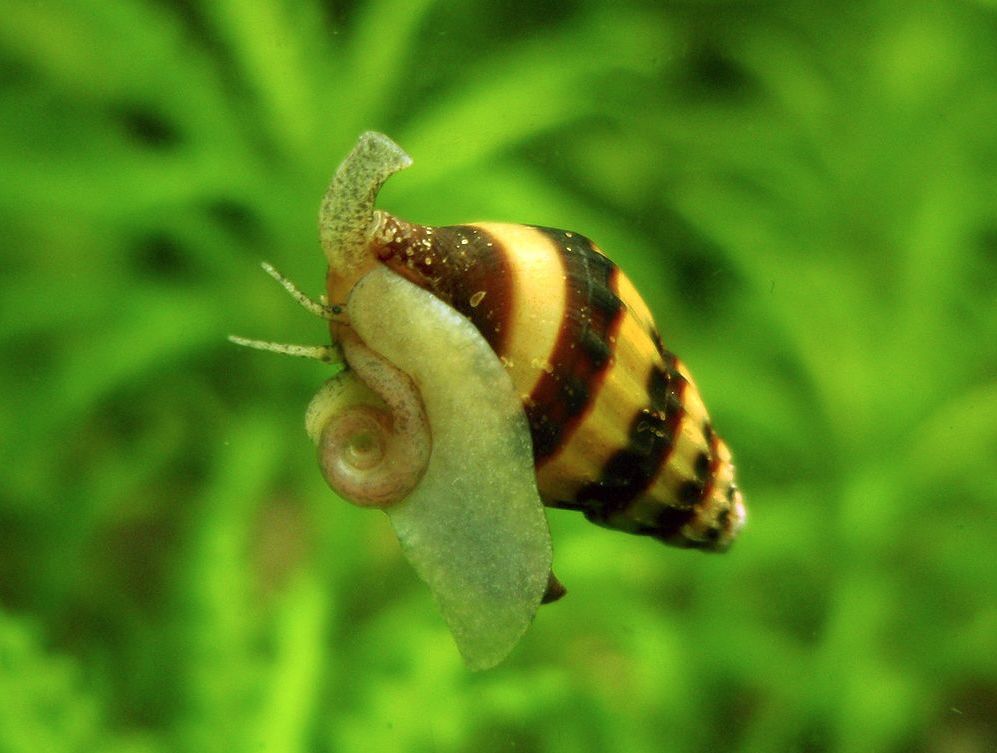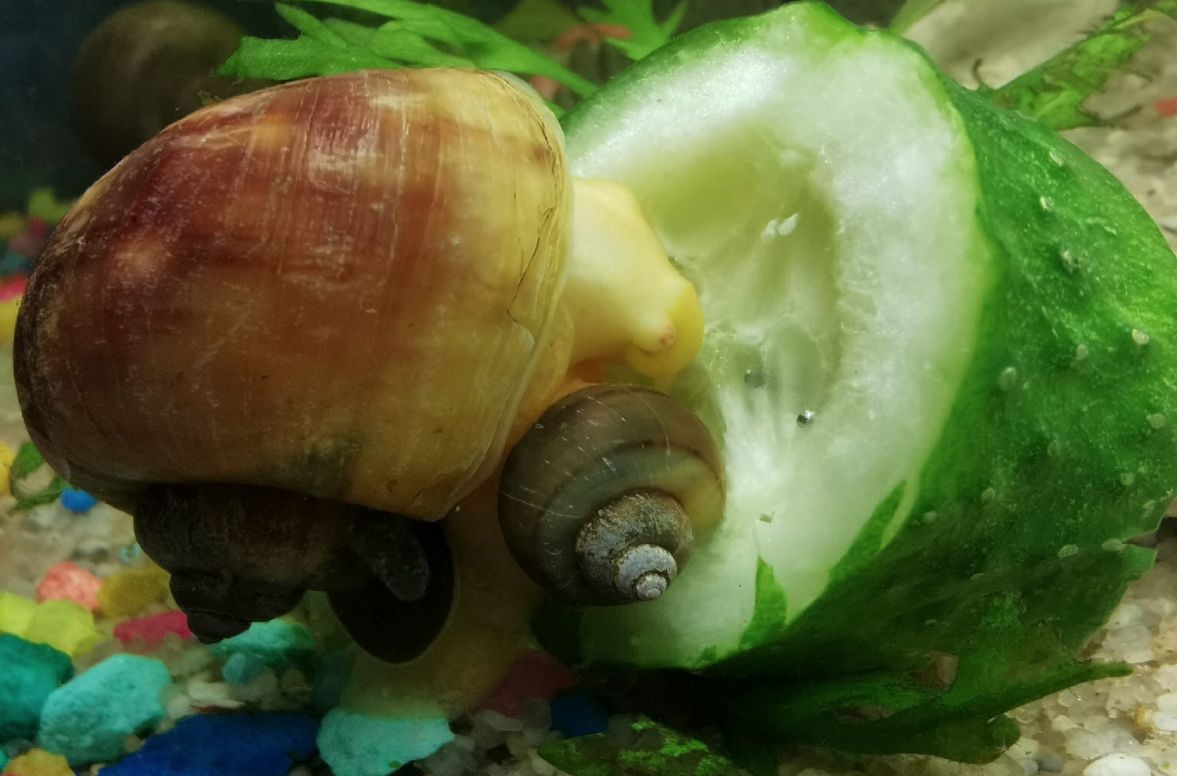Many beginner aquarists struggle with managing snail populations in their tanks, especially when the numbers become overwhelming. This raises two important questions: how to get rid of snails in aquarium, and where do they come from?
If you didn’t introduce snails intentionally, they likely entered your tank on live plants. Snail eggs can cling to the leaves of aquatic plants purchased from stores, leading to an unexpected population increase.
To manage snails, consider several approaches. You can use natural predators, such as certain fish species, or employ traps designed to capture snails without harming other inhabitants. Regular maintenance, including removing excess food and debris, can also help keep their numbers in check.

Contents
Aquarium snail infestation: How to avoid
Dealing with a snail infestation in your aquarium can be frustrating, but several steps can help you control and manage their population. Here’s a guide to address this issue effectively:
Snails often enter new tanks as eggs or adults hidden in plants, decorations, or even when adding new fish. Check all plants for eggs or treat them with a solution like “No Planaria,” which kills snail eggs. While it’s common for aquarists to have some snails, they usually pose no threat to a balanced tank.
To prevent snail infestations, quarantine new fish, plants, or other additions in a separate tank for a period of time before introducing them to your main aquarium. This allows you to observe and address any potential issues before they spread.
Instead of trying to eradicate snails entirely, focus on controlling their population. Rapid breeding often signals underlying problems in the tank. Overfeeding fish is a primary cause of excess snails, as they thrive on uneaten food. Feed your fish only what they can consume in a few minutes and promptly remove any leftovers.
Regular maintenance is essential. Perform routine water changes and ensure proper filtration to eliminate excess organic matter that snails feed on. Additionally, regularly remove dead plant matter and clean the substrate to prevent snails from finding additional food sources.
How to get rid of snails in aquarium?
Many snail species are hermaphroditic, meaning a single individual can produce thousands of offspring when provided with ample food. This rapid reproduction can lead to a sudden increase in snail populations, often without any noticeable juveniles at first. Young snails typically hide in crevices or under decorations to avoid predators, so you may not see them until they grow larger and emerge in greater numbers. Understanding this lifecycle can help you manage their population more effectively in your aquarium.
Manual Removal
One of the simplest methods to control snail populations is by physically removing them from your tank. While this approach can be quite labor-intensive, many aquarists still rely on it. Typically, snails are collected during regular tank cleanings. Although this method won’t eliminate snails entirely, it can significantly help manage their numbers and keep your aquarium healthier.
Assassin snails
Assassin snails are known for their ability to prey on and help control populations of other snails in aquariums. These attractive snails, with their distinctive cone-shaped shells, typically grow to a size of 1 to 2 cm. As predators, they feed on various types of snails and have recently gained popularity among aquarists due to their effectiveness and availability.
While assassin snails can significantly reduce snail populations—sometimes even eradicating them entirely—they may switch to a more typical diet of algae and detritus if their prey becomes scarce. This behavior is not common for them but can occur when they run out of other snails to eat.
It’s important to note that while assassin snails can be effective in managing other snail species, they may not completely eliminate them from your aquarium. Their success depends on several factors, including the size and density of the existing snail population, the availability of alternative food sources, and the individual appetites and behaviors of the assassin snails themselves. For the best results, it’s advisable to monitor your snail population closely and consider combining the use of assassin snails with other control methods.

Traps for snails
Snail traps are a popular option for controlling snail populations, and many companies offer them for purchase online. While the designs may vary, all traps operate similarly: a snail is attracted to bait, enters the trap, and then cannot escape. This method can effectively reduce snail numbers but requires patience and consistent effort over time. To enhance effectiveness, consider using enticing baits like cucumber or sinking pellets to lure the snails in. Regularly checking and emptying the traps will help you maintain better control of the snail population in your aquarium.
DIY Bottle Trap
Many companies now manufacture traps specifically designed for snails, and you can easily order them online. While the traps may vary in design, they all operate on the same principle: a snail is attracted to the bait, enters the trap, and becomes unable to escape.
Using these traps can be an effective way to reduce snail populations in your aquarium. However, it’s important to remember that this method requires time and consistent effort to yield significant results. Regularly checking the traps and replacing the bait—common options include cucumber slices or commercial snail bait—will enhance their effectiveness in controlling snail numbers.
Fishes that feed on snails
There are several fish species that are known to feed on snails and can help control snail populations in aquariums. Here are some common examples:
Green spotted puffer fish
The best one is green spotted puffer (Tetraodon nigroviridis), since snails are the main feed for them just like for all species of this family. This fish can crack even a hard shell of MTS snail, as for ramshorn and snails from Physidae family – they will be completely destroyed. Tetraodon nigroviridis is the most efficient fish to, but this is a rather badly behaved fish – it can attack other tank inhabitants and feed on prawns.
Clown loach
Except this fish also a freshwater clown loach eats snails. Clown loaches are popular snail-eating fish. They have a voracious appetite for snails and can consume them in large numbers. The fish is large and easily eats ramshorn, but it won’t crack the hard shell of MTS snail. The drawbacks of keeping such a fish in a tank is that it’s a large one and they should be kept in a school which isn’t always possible.
Yoyo loach
Yoyo loaches are known to eat snails and are particularly effective against Malaysian trumpet snails. They have a playful and active nature, making them an interesting addition to the aquarium.
Also paradise fish, gourami and other anabantids feed on snails, though they eat snails only if hungry. Therefore such fishes aren’t very efficient if the task.
Chemicals to kill snails in aquarium
Aquarium enthusiasts, especially beginners, often consider chemical treatments for controlling snail populations due to their perceived simplicity. However, caution is essential when using these chemicals, as many can be harmful to aquatic life, including fish, shrimp, and beneficial bacteria. This is particularly true for shrimp, which are very sensitive to chemical substances; for example, many treatments contain copper, a substance that is toxic to invertebrates.
Before resorting to chemicals, it’s advisable to explore non-chemical methods for managing snails. Techniques such as manually removing snails, introducing natural predators, or using traps can be effective and safer alternatives. Only consider chemical treatments as a last resort, ensuring that any chosen method prioritizes the health of all tank inhabitants.
This approach not only protects your aquatic life but also promotes a more balanced ecosystem within your aquarium.
If you decide to use a chemical treatment for snails, follow these guidelines to ensure the safety of your aquarium’s inhabitants:
Choose a Snail-Safe Treatment: Look for products specifically designed to eliminate snails in aquariums. Carefully read the label to confirm it is safe for your fish and other aquatic life.
Follow Instructions: Always adhere to the manufacturer’s instructions regarding dosage, application, and safety precautions. Overdosing or improper use can harm your aquarium’s ecosystem.
Remove Sensitive Species: Before applying any treatment, consider temporarily relocating sensitive species, such as shrimp or snails you wish to keep, to a separate tank or container.
Monitor Water Parameters: Be aware that some treatments can affect water quality, potentially causing spikes in ammonia or other compounds. Monitor your water parameters closely during and after treatment, taking steps to maintain a stable environment.
Perform Partial Water Changes: After the treatment period, conduct partial water changes to remove any residues or byproducts from the chemicals. This helps restore water quality and minimizes impact on the ecosystem.
Consider Multiple Treatments: A single treatment may not eliminate all snails or their eggs. You might need to repeat the process as directed by the product instructions to address any remaining snails or newly hatched offspring.
Always prioritize the well-being of your aquarium’s inhabitants when using chemicals.
Vegetable baits
Snails are attracted to vegetables like lettuce, cucumber, and cabbage, making them effective bait for removal. To catch snails, place pieces of these vegetables on a plate at the bottom of the tank in the evening. By morning, you’ll likely find many snails gathered there, ready for removal.
Another effective method involves using cucumber. Place a whole cucumber in the tank—ideally in the evening—and turn off the lights. In the morning, you’ll find a number of snails on the cucumber, which you can easily discard.
If you repeat this process about 3–4 times, you can significantly reduce the snail population in your tank.
One drawback of this approach is that it can temporarily cloud the water, making it look chalky. However, this usually clears up within 2–3 days. Manual removal is a great way to maintain a healthy environment without chemicals.
